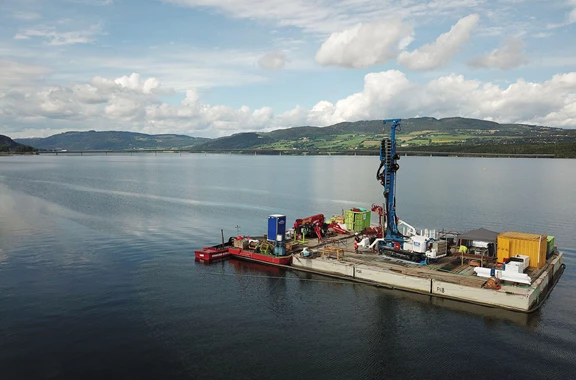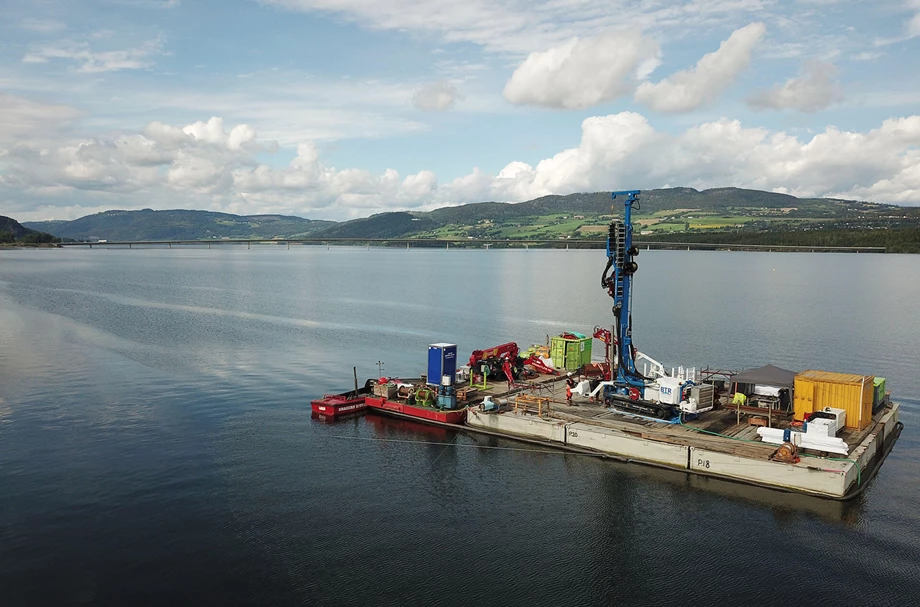


A geo-technical survey was completed to determine how deep the foundations of a new bridge over Norway’s biggest lake, Mjøsa, should be. The scope of the project was a survey along two lines across the lake by undisturbed sampling, sonic sampling and – parallel to the sampling – a complete CPTu test from a barge. This project was carried out with Royal Eijkelkamp sonic drilling equipment.
Moritz Aydt, project manager at BTR Bohrtechnik Roßwag, explains why BTR used the Royal Eijkelkamp sonic drilling equipment for this project. ‘To be able to engineer the bridge foundation, our client needed some soil data. We accomplished that with sonic sampling and CPTu. We did the CPTu testing to extreme depths.'
'First, we went down through 80 metres of water and continued CPTu from the lake bed till we reached an overall depth of 140 metres. The cone penetration or cone penetrometer test (CPT) is a method used to determine the geotechnical engineering properties. The parameters measured are tip resistance, sleeve friction, pore pressure, inclination and penetration speed. This data shows our client the condition of the soil and how deep the foundations of the bridge should be.’
‘I would definitely recommend sonic because of all its advantages.’

‘Our company chose sonic drilling because it’s perfect for soft rock formations, silts and gravels. We come from an area where we mostly do rock drilling. But occasionally we must go through overburden or do sampling in landfills and softer formations. This is where sonic is perfect because it gets you nice core samples at an unbeatable production speed. This makes sonic very efficient and fast. I would definitely recommend sonic because of all its advantages. Its production speed allows us to be much more competitive. With the dual head sonic rig – that is, sonic plus high speed rotary – we can apply our sonic rig for multi purposes.’
The Moelv–Roterud project, which includes a new 9-km bridge across the Mjøsa lake, is one of three EPC contracts on the Moelv–Øyer stretch, which is a 44-km four-lane highway project run by Nye Veier AS. The existing bridge is not dimensioned for the future traffic. Therefore, Nye Veier AS started this project to investigate the possibilities for a new bridge.
The project includes the 4-lane highway across the bridge, the bridge itself, and 2 interchanges and 8 smaller structures over a distance of 1.6 km. This project is technically unique because of the depth of the lake (80–90 metres), the depth to solid rock (deeper than 80 metres) and the conditions of the soil.

Need help for you soil or water related project? Please contact our specialist John.